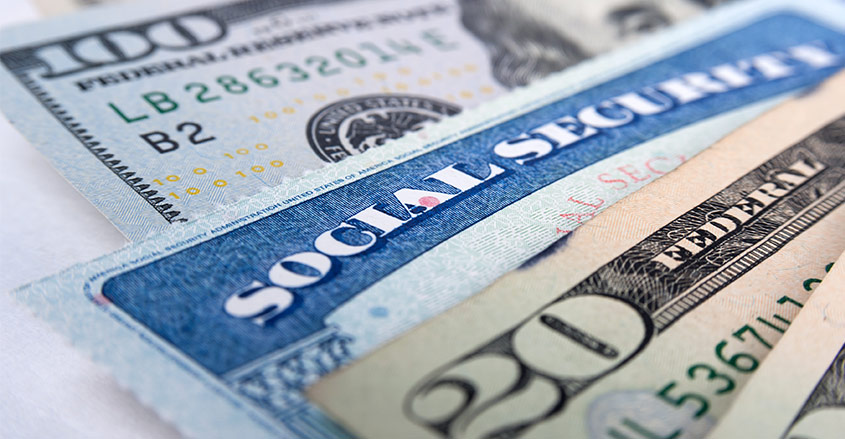The Social Security Administration announced on Tuesday that it expects to pay out more money than it takes in this year. That means that it will have to draw on its trust fund for the first time since 1982.
The annual report from the trustees had predicted there would be a shortfall, but not until 2021.
Social Security makes payments to recipients from tax revenue and with interest from the trust fund. Unfortunately, it is estimated that the trust fund will be depleted by 2034.
If this plays out the way the trustees are predicting, recipients will only receive about 75% of the scheduled benefits.
Of course, Congress could step in and fix Social Security by raising taxes.
But let’s assume that nothing happens and Social Security falls short. How do you prepare for retirement if your benefits are going to be three-quarters of what you were expecting?
Obviously you have to make changes soon if you expect to get less from Social Security. If your employer offers a 401(k), you should contribute as much as you possibly can to it, as long as it has good fund choices.
Many people only contribute the amount that gets matched by the employer, but you can contribute 100% of your income up to $18,500 or $24,500 if you are 50 or older.
Even if your employer only makes a matching contribution up to 6%, the contributions you make to the 401(k) are taken out pre-tax and then the funds grow tax free, so you are lowering your current taxes and your portfolio is growing tax free.
Paying as little in taxes in retirement will become even more important if Social Security is reduced. Investing in municipal bonds can produce tax-free income, but the interest rates aren’t very high.
Corporate bonds tend to pay a higher interest rate, but the interest you receive is taxable. You may want to use a blend of investments to maximize your income and minimize your taxes.
You can calculate the taxable equivalent of municipal bonds rather easily and it is a useful practice. You take your tax bracket and subtract from one and then divide the tax-free rate by the reciprocal.
For instance, if your tax rate is 25%, subtract that from one (1-0.25=0.75). Now to compare any tax-free yield with a taxable yield you divide the tax-free yield by 0.75.
For instance, in order for a taxable yield to be better than a 3% tax free rate, it would need to be 4% or higher (3/0.75=4).
To use a real world example, the current yields on two municipal bond ETFs are 2.22% and 2.3%. If we divide 2.3% by 0.75, the taxable equivalent yield would need to be 3.06% or higher.
The current yield for the iShares iBoxx Investment Grade Corp Bond ETF (NYSE: LQD) is 3.3%. This means the taxable yield is a little better than the tax-free yield.
Many companies pay dividends that produce a higher yield than municipal bonds, but the dividends are usually taxed at your regular income tax rate. Stocks are also considered riskier investments than muni bonds, so you want to keep that in mind as well.
The municipalities that issue bonds are required to pay you your interest. A corporation isn’t required to pay stockholders a dividend.
Another possible solution for tax-free income in retirement is a Roth IRA. The Roth is different in that your contributions are made with post-tax dollars.
Distributions aren’t taxed and the capital gains while the assets are in the account aren’t taxed.
Consequences
Keep in mind though that there are limitations to the Roth in terms of who can open one and the account has to be open for five years before the distributions are made, otherwise they can be subject to taxes.
As 0f 2018, the maximum income levels are $135,000 for single filers and $199,000 for married couples that file jointly. Just like it is with traditional IRAs, the maximum contribution is $5,500 if you are under 50 and $6,500 if you are over 50.
If you qualify, another popular strategy is to convert traditional IRAs or 401(k) assets to a Roth IRA. It is a little tricky because you will have to pay taxes on the distribution amount from the traditional IRA or 401(k), but it will grow tax free and then you don’t have to take mandatory distributions or pay taxes on the withdrawals in retirement.
One way this can be handled to minimize the tax consequences is to plan the conversion for a year when you know your income will be lower.
For instance, if you plan to retire when you are 65 and plan to retire in the first quarter of the year, your total income for that year will be much lower than it would have been if you worked the whole year. This would be an ideal year to convert assets to a Roth IRA.
These are just a few ideas on how you can be better prepared for retirement and boost your income if you are already there. Making the most of your own investments is going to become even more important once the Social Security trust fund is depleted and benefits are cut.


